

At the Essene community of Qumran along the Dead Sea, those in authority held various Old Testament names according to what they did and who they were in charge of. Likewise, the name Mary was a title, not a name. It derived from the name "Miriam," who was Moses' sister. This is a priesthood of woman which descends from her.
At this point in time, I do not know what any of the real names of the Biblical Marys were; however, I do know that Marys held this title of Miriam because they had been given a form of ministry, that of prophetess and priestess, taking part in the liturgies of orders like the Egyptian Therapeutae, which was the medical society of the Essenes, the form of Judaism in which Jesus and John the Baptist were raised. The Essenes celebrated the Exodus as a drama of salvation, with two choirs, one of men led by a man representing Moses, the other of women led by a Miriam.
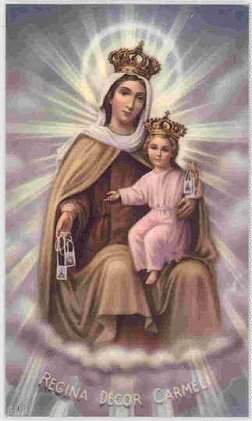
It has been said that Mary, Mother of Jesus, was similarly immaculately conceived otherwise she would not have been pure enough to bear the Son of God. But what is the truth behind the Immaculate Conception and the Virgin Birth?
We need to go back and look at the rules of marriage according to the Judaic sect of Joseph and Mary. The Holy Family were all of the tribe of Judah, which descends directly from King David. The scriptures also say that Jesus was a Nazarene, but this does not mean that he came from the town of Nazareth. Although Luke 2:39 implies that Joseph's family came from Nazareth, the term "Nazarene" or "Nazarite" was strictly sectarian and had nothing whatever to do with the town.
In Acts 24:5, Paul is brought on a charge of religious sedition before the Governor of Caesarea: "For we have found this man a pestilent fellow, and a mover of sedition among all the Jews throughout the world, and a ringleader of the sect of the Nazarenes." The modern Arabic word for "Christians" is "Nasrani," and the Islamic Koran refers to Christians as "Nasara" or "Nazara." These variants ultimately derive from the Hebrew "Nozrim," a plural noun stemming from the term "Nazrie-ha-Brit," "Keepers of the Covenant," a designation of the Essene Community at Qumran on the Dead Sea.
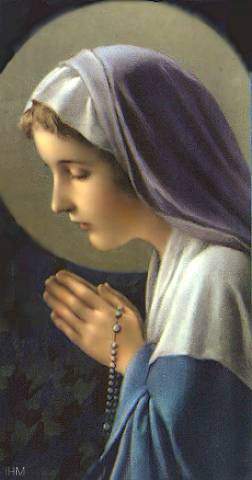
It is a point of contention as to whether the town of Nazareth existed at all during Jesus' lifetime. I personally do not believe that it did, but rather, was created as a tourist trap along with other points of interest in the Holy Land that are on the usual tours, in order to support the Church's censorship of the Bible. The town of Nazareth does not appear on contemporary maps, nor in any books, documents, chronicles or military records of the period, neither of Roman nor of local compilation. Even Paul, who relates many of Jesus' activities in his letters, makes no allusion to Nazareth. This being the case, every reference to "Nazareth" in English translations of the Gospels must be regarded as incorrect, stemming from a deliberate misunderstanding of the word "Nazarene." As far as has been ascertained, the settlement of Nazareth (which does not feature in the Hebrew Talmud) was of no significance before the Roman destruction of Jerusalem in AD 70.
John the Baptist and Jesus' brother James were both Nazarites, but the sectarian term can be traced back to the Old Testament figures of Samson and Samuel. Nazarites were ascetic individuals bound by strict vows through predetermined periods, as related to Moses (Numbers 6:2-21). In the Gospel era, Nazarites were associated with the Essene community of Qumran, the environment of Joseph and Mary, the parents of Jesus.
The priestesses of Mary were also part of the Nazarite order. Mary, mother of Jesus, was born 26 BC. She was 17-1/2 when Jesus was conceived. She was a member of the order of Dan, in which women were called Virgins, or nuns, until their legal marriage. The Gabriel, as we will see below, was in charge of all single woman at Qumran. Mary was widowed in 23 AD. In December 32 AD, Mary began a three year prepartion to become a Widow, an order of ministry given to women at the age of 60. She was chosen by the Christian party to be the Chief Woman, Mother of Gentiles. John Mark, as Chief Gentile, was made her "son", so she was also "Mary the Mother of John Mark."
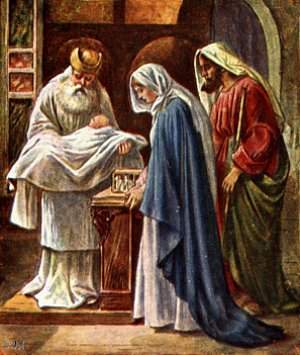
This community observed some highly regulated disciplines in relation to dynastic betrothal and matrimony, so we should refer the question of Mary's said virginity to this very specific context.
Both Matthew 1:18 and Luke 2:5 state that Mary was "espoused" to Joseph, and she is thereinafter referred to as his "wife." As determined in this regard. the word "espoused" does not mean betrothed or engaged, it refers to "contractual wedlock." But in what circumstance would a married woman also be virginal? To answer this question we must refer to the original Hebrew word "almah," the word that has generally, but incorrectly, been translated as "virgin" (virgo), and incorrectly thought to mean "virgo intacta," or a physical virgin.
The real meaning of "almah" was "young woman" and it had no sexual connotation. It was quite feasible, therefore, for Mary to be both an almah and Joseph's wife. Let us look again at how Matthew describes what followed. When Joseph learned of Mary's pregnancy, he had to decide whether or not to hide her away. It is of course perfectly normal for a wife to become pregnant, but this was not the case for Mary.
As the wife of a dynastic husband, Mary would have been governed by the regulations applicable to the Messianic (anointed) lines such as those of King David and Zadok the Priest (of which John the Baptist's family belonged). In fact, Mary was serving a statutory probationary period as a married woman of the dynastic hierarchy -- a period of espousal during which sexual relations were forbidden, and Joseph would have had just cause for personal embarrassment when Mary was discovered to have conceived. The situation was resolved only when the high-ranking Abiathar priest, the designated Gabrlel, granted approval for the confinement.

From the time of King David, the dynasty of Abiathar (2 Samuel 20:25) was established in the hierarchy of senior priests. The line of Zadok was the primary priestly heritage, and the line of Abiathar was second in seniority. In addition to the traditional priestly styles, the Essenes also preserved the names of the Old Testament archangels within their governing structure. Hence the Zadok priest was also the archangel Michael, and the Abiathar priest (whatever his personal name) was also the angel Gabriel. Being subordinate to the archangel Michael ("the Lord" or "Like Unto God"), the Abiathar/Gabriel was the designated "Angel of the Lord" (the ambassador of the Michael-Zadok, or Melchizedek). This angelic system is detailed in the Book of 1 Enoch (4:9), the War Scroll (9:15-17) of the Dead Sea Scrolls, which also indicates the angels' order of ranking during the Gospel era.
In the Luke account, it was through the mediation of the angel Gabriel that Mary's pregnancy was granted approval, being of holy consequence. This is known as the "Annunciation," but it was not so much a matter of announcing as one of sanctioning.
Prior to Jesus' birth, the High Zadok (archangel Michael) was Zacharias. His wife was Mary's cousin Elizabeth, and his deputy, the Abiathar (angel Gabriel) was Simeon the Essene. It was he who gave the formal consent for Mary's confinement, even though she and Joseph had disobeyed the rules of dynastic wedlock.
It is evident, then, that these dynastic rules were no ordinary matter, and were quite unlike the Jewish marital norm. Parameters of operation were explicitly defined, dictating a celibate lifestyle except for the procreation of children, and then only at set intervals. Three months after a betrothal ceremony, a "First Marriage," with anointing, was formalized to begin the espousal in the month of September. Physical relations were allowed after that, but only in the first half of December. This was to ensure that any resultant Messianic birth occurred in the Atonement month of September. If the bride did not conceive, intimate relations were suspended until the next December, and so on.
Once the probationary wife had conceived, a "Second Marriage," with anointing, was performed to legalize the wedlock. However, the bride was still regarded as an almah (young woman) until the completion of the Second Marriage, which was never celebrated until she was three months pregnant. The purpose of this delay was to allow for the possibility of miscarriage. Second Marriages thus took place in March. The reason that full wedlock was not achieved util pregnancy had been firmly established was to accommodate the dynastic husband's legal change of wife if the first should prove barren.
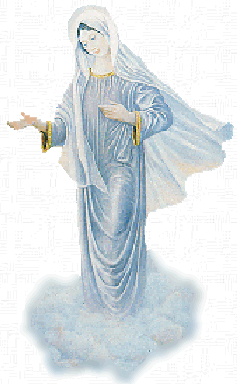
In the case of Joseph and Mary, it is apparent that the rules of dynastic wedlock were infringed, since March gave birth to Jesus at the wrong time of year (Sunday 1 March, 7 BC). Sexual union must therefore have taken place six months before the designated December, in June 8 BC, about the time of their initial betrothal, some three months before their First Marriage in September. And so it was that Mary not only conceived as an almah, but she also gave birth as an almah before her Second Marriage.
Once Mary's unauthorized pregnancy had been confirmed, Joseph would have been granted the choice of not going through with the Second Marriage ceremony. To save embarrassment he could have placed Mary in monastic custody ("put her away privily," as in Matthew 1:19), where the eventual child would be raised by priests.
But if the child was a boy, he would be Joseph's firstborn descendent in the Davidic succession. It would have made little sense to bring him up as an unidentified orphan, leaving a possible younger brother to become his substitute in the kingly line. Joseph and Mary's unborn child was plainly a significant prospect and demanded special treatment as an exception to the general rule. The angel Gabriel would therefore have advised that, since a sacred legacy was at stake, Joseph should go ahead with the Second Marriage ceremony..."for that which is conceived in her is of the Holy Ghost" (Matthew 1:20).
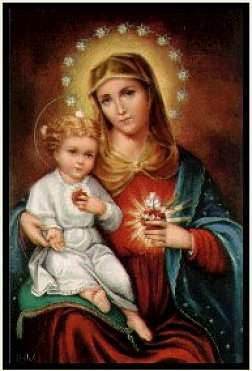
Following this dispensation, the normal rules would have been applied once more, the first being that no physical contact was allowed between man and wife until some while after the child had been born. "Then Joseph being raised from this sleep did as the angel of the Lord had bidden him, and took unto him his wife: And knew her not til she had brought forth her firstborn son: and he called his name Jesus" (Matthew 1:24-25). All that remained was for the Gospel writers to wrap the whole sequence in a blanket of enigma, andthis was made possible by the Old Testament prophecy of Isaiah.
In the early Christian belief, there were numerous Gospels of Jesus. It was not until AD 367, however, that the New Testament really began to take shape as we know it. At that time a collection of selected writings wereput together by Bishop Athanasius of Alexandria. These texts were ratified and authorized by the Council of Hippo (AD 393) and the Council of Carthage (AD 397). In later years, the choice was strategically limited once again, and many important texts were excluded. Indeed, only four were finally approved by the Council of Trent in 1546: the Gospels of Matthew, Mark, Luke and John.
Recently the Nag Hammadi Codices have brought some additional Gospels to the fore. They include the Gospels of Philip, Thomas and Mary Magdalene (who was not a whore, but Jesus' royal wife, a high priestess and Mary in her own right). In some cases the individual tracts concur with passages from the New Testament (like how some tracts from the New Testament concur with the Dead Sea Scrolls), but in a number of instances they differ, sometimes markedly. It is a matter of particular interest, for example, that the Gospel of Philip states, "Some say Mary conceived by the Holy Spirit. They are wrong. They do not know what they are saying." And the following is quoted from the Gospel of Thomas: "Jesus said, 'If the flesh came into being because of the spirit, it is amazing, but if spirit came into being because of the body, it is even more amazing. I am amazed, though, at how such great wealth has settled into such poverty."
Does this mean that Mary, Mother of Jesus, behaved immorally and should be branded as a whore? Of course not. What it means is that in spite of the marriage being arranged between two royal descended lines of King David (one from Solomon and the other from Nathan, another of David's sons), Jesus's parents, Joseph and Mary, were really in love.
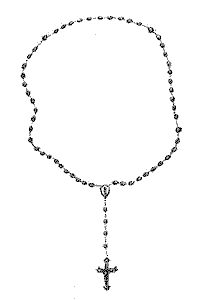


Click here for more on the Marys
Home